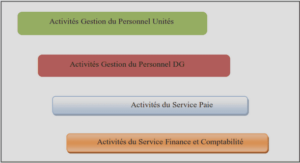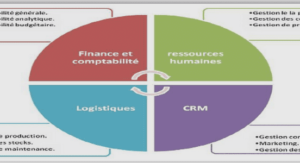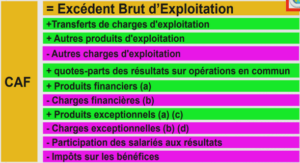The linguistic situation in Algeria
Following the initial sociolinguistic purposes of our study and trying to stick to the steps of a precise and concise sociolinguistic research, we intentionally avoided detailing the historical events that Algeria witnessed. Nevertheless, we give a glance at the history of Algeria referring mainly to the people and language of each period briefly.
Historical background
Algerian history is one of repeated invasions. Algeria was invaded by the Vandals in the 5th century who occupied the country for a hundred years before being driven out by the Byzantine army. During the 7th century, the Arab conquest of North Africa thwarted the expansion of Byzantium and permanently changed the character of North Africa. In the beginning, the Berbers resisted the Arab invasion to finally embrace Islam. Then, Algeria became part of the powerful Arabo-Berber empires of the Almoravids and Almohads which dominated the Maghreb and Andalusia.
The name ‘Algeria’ was coined by the Ottoman Turks in the 16th century to describe the territory controlled by the regency of Algiers, initially a Turkish colony. Later on, Algeria was annexed to France despite intense popular resistance. The French authorities worked on eliminating and destroying the local culture of the Algerians, bearing in their minds the concept of a ‘French Algeria’.
A multilinguistic situation
It is imperative to stress that all the Algerian historical background had a direct influence on its current linguistic situation. The linguistic profile in Algeria like North African countries is said to be a complex one. Four main languages co-exist in the country. These languages have different political and social statuses. In Algeria we have: 1) Classical (literary Arabic) as the official language (replaced by Modern Standard Arabic),2) French as the language for scientific teaching, knowledge and rationality, 3)Algerian Arabic as the mother tongue of the majority, and language of daily use in informal situations and 4) Tamazight with its different varieties. In the following section, we describe the main characteristics of the four languages and varieties that are in contact in Algeria .
Berber
The native population of North Africa came to be called Berbers. Ancient Berbers used Tifinagh as a writing system for their language. Some Tifinagh inscriptions were discovered in Libya and in the Algerian Sahara. Distinguished primarily by cultural and linguistic attributes, the Berbers lacked a written language and hence tended to be overlooked or marginalized in historical accounts. Historically, it was the Greeks who first called the people living in the Maghrib as barbarians. The word ‘berber’ was eventually adopted later on by Romans, Arabs and Europeans. But the kabyles, the largest and most politically active community of Algerian Berbers, prefer the term Imazighen, which means free or noble men. The original language of Algeria was Berber, which has different varieties throughout the country. Tamazight is a language of oral tradition which belongs to the Chamito-Semitic family. Berber varieties covered a huge territory from Egypt to the Atlantic borders; and from the Mediterranean to the Nigerian River. Algeria is the second country in which Berber languages are found after Morocco. Moroccan Berbers use the Arabic script to transcribe the different Berber varieties. Even in Algeria, M’zab, for instance write their variety in Arabic scripts.
It is difficult to give the exact number of Berber inhabitants. They are estimated to form approximately 20 percent of the Algerian population . Berber varieties are confined to mountain zones and domestic use only. The major Berber groups are found in:
• Kabylie Mountains: Kabyle is the most widespread variety spoken mainly in TiziOuzou, Bejaia (referred to as Great Kabylie), Bouira, Boumerdes and Bordj Bouariridj (Small Kabylie). • Aures Mountains: Chaoui is another variety of Berber spoken exclusively in the Aures Mountains comprising places like Batna, Biskra, Oum El-Bouaghi, Aïn Mlila, Aïn Beïda. • North Sahara ( Ghardaia): M’zab is a veriety spoken mostly in Ghardaia and other Ibadite cities.• South Algeria ( Touareg of Tassili): In Algeria, there are only 40,000 to 50,000 Tuareg speakers Tuareg has remained the most pure of these Berber languages, containing relatively few French and Arabic loan words. The three main dialects are Tamahaq (Algeria), Tamasheq (Mali), and Tamajeq (Niger).
Actually, all Berber or Tamazight dialects compete with Arabic dialects and French in particular in cities of centre Algeria, causing a clear retreat in status and usage of Berber language. Nonetheless, words from these wide Tamazight varieties are often found in the spoken Arabic dialects. Ultimately, many French words are also heard in the Tamazight varieties, usually terms that have no equivalents in Berber varieties. There were serious actions taken by scholars in order to elaborate and codify Berber language. Salem Chaker and Mouloud Mammeri are famous names who tried to develop a standardised grammar for Tamazight during the 1980s.
Communities of Berber-speakers seem to be dissatisfied with the current situation of their language. They claim an official status for Tamazight. They also demand recognition for Tamazight as a national language which should give the citizens the right to use the language in any circumstances of public life.
Nowadays, Tamazight is introduced into two important spheres. In fact, it is taught in schools and universities such as great and small Kabylie and it is also admitted in the media where many exclusive Tamazight TV and radio channels broadcast a myriad of Tamazight programs. These effective measures certainly worked in favour for a strong and lasting status of Tamazight.
North African Berbers resisted several attacks and preserved their customs and oral heritage through though times. Phoenician traders established Carthage and expanded small settlements along the North African coast. They were followed by the Romans, who annexed Berber territory to the Roman Empire. In 429, a Germanic tribe of Vandals crossed into Africa from Spain and pillaged Carthage. In 533, the Byzantines raided the Vandal kingdom. From 642 through 1830, Muslim armies invaded and brought Islam to the Berbers.
General Introduction |





